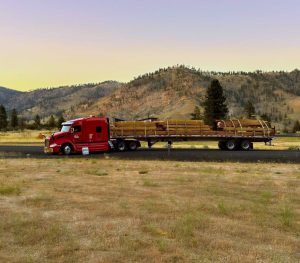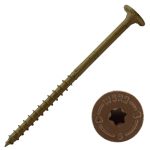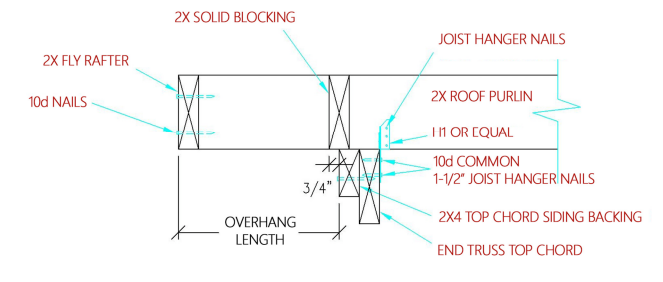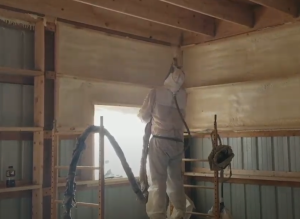Yesterday I talked a bit about wood species, and hinted a more pertinent issue than which species lumber is used on a building, is that wood used should be kiln dried. For both technical and performance reasons, drying or seasoning wood is required when making glued wood products such as laminated beams, plywood, particleboard, furniture and many other products. The use of dry framing lumber minimizes negative performance issues in buildings with structural wood framework.
Drying wood to the desired final moisture content minimizes dimensional changes and warping in use. Pieces which might degrade and develop defects during drying can be sorted out at the mill and possibly directed to another use. Such quality control helps to assure performance of products in service and leads to greater customer satisfaction. Lumber which is delivered “green” to wholesalers, retail lumber yards and end users, often has a high percentage of downfall due to the results of natural curing.
 The lower price of green lumber, in relationship to dry lumber, is negated by the often 15-20% of pieces which cannot be used as originally intended.
The lower price of green lumber, in relationship to dry lumber, is negated by the often 15-20% of pieces which cannot be used as originally intended.
Dry wood provides a better base for paints, finishes and adhesives. Many finishes may not adhere at all to green wood, or the subsequent drying of wood may lead to failures in the paint coat. Adhesives may not bond well (or at all) on green wood.
Water- or oil-borne preservatives cannot be forced under pressure into wood which has free water in its cells. When a preservative cannot penetrate adequately, full protection against attack by decay fungi or insects cannot be obtained.
Drying lumber improves the resistance to decay. Wood which has been dried and kept below 20% moisture content does not have sufficient moisture to support most decay organisms. Also, organisms already in the wood will be killed when exposed to high kiln-drying temperatures for several hours.
Drying wood may increase the strength of wood unless defects developing during drying counteract this trend.
Drying reduces the weight of wood, and since truck and railroad shipping rates are based on weight, shipping costs can be reduced. The lower weight also makes for more efficient handling of lumber on job sites. Construction times are reduced as workers can more easily move and install larger quantities of lumber by hand.
If none of this so far makes an impact, perhaps mentioning green lumber shrinkage will. The “magic number” where lumber becomes dimensionally stable is 19%. So, Green lumber at 25 to 30% has a huge potential for shrinkage. If an 8’ piece of lumber shrinks an inch, on average, how many inches would a 40’ long building shrink?! 5 inches is huge! I used to wonder why the roof steel on older buildings looked like it was “wavy”, and then I figured out the answer, green lumber shrinkage!
Choosing to “build green” does not mean using green lumber. Choose dimensionally stable kiln dried lumber, for all of the reasons above.









